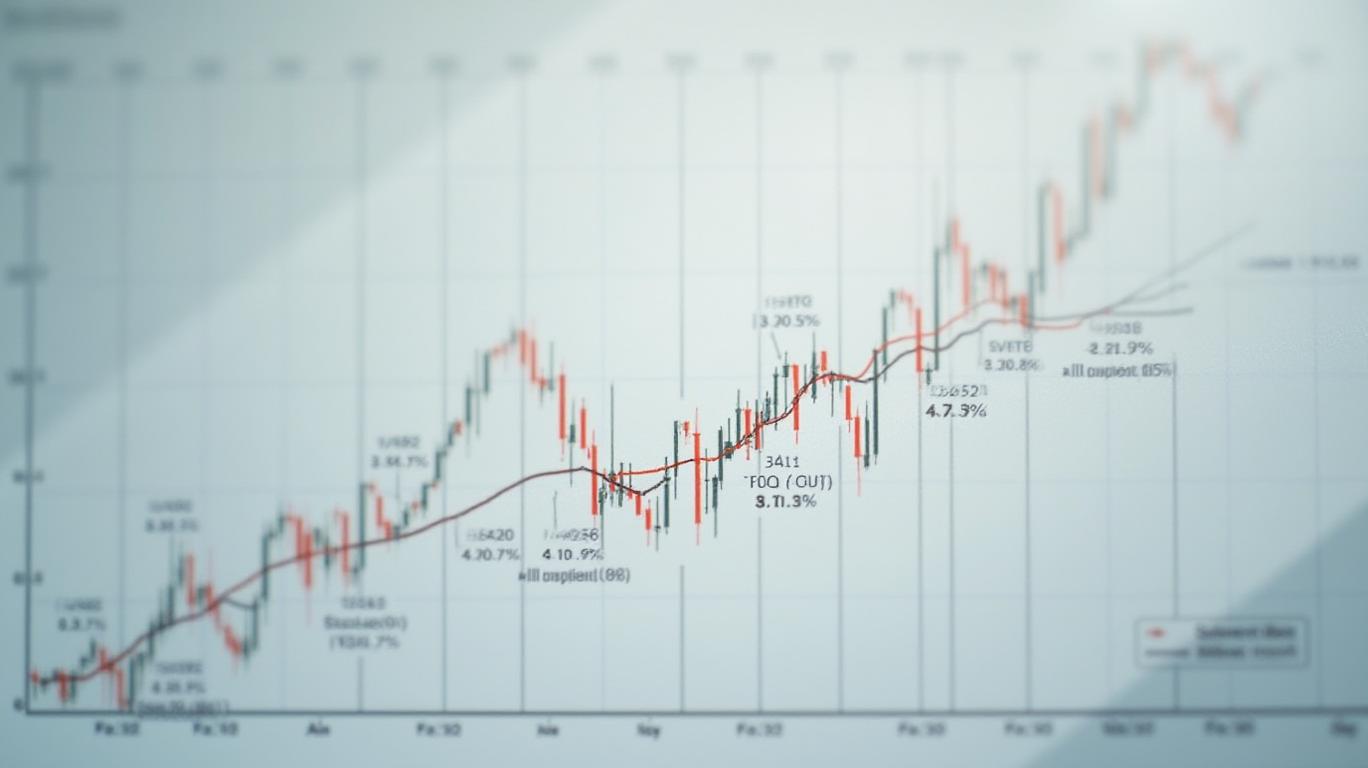Treasury Yields Plunge as Weak Economic Data Fuels Recession Fears
The U.S. Treasury market is sending a stark warning: economic growth is stalling. On April 29, the 10-year Treasury yield dropped to a three-week low of 4.17%, its lowest since early March, as a barrage of weak economic reports fueled concerns about a slowing economy. The retreat in yields reflects a flight to safety amid deteriorating data—from collapsing consumer confidence to manufacturing sector contraction—and underscores the fragility of the current expansion.

The Data Deluge: Why Yields Are Falling
The April economic data dump was a masterclass in disappointment. Key metrics included:
- Consumer Confidence Collapse: The Conference Board’s index plummeted to 86.0, its lowest since the 2020 pandemic, with expectations for income and jobs hitting 12-year lows.
- Manufacturing Sector Stress: The ISM Manufacturing Index fell to 49.0 in March—the first contraction since May 2023—while regional surveys like the Empire State index sank into negative territory.
- GDP Growth Downgraded: First-quarter GDP is now projected to grow just 0.4% annualized, a sharp drop from Q4’s 2.4%, with analysts at Goldman Sachs raising recession odds to 45% for 造年.
These numbers are pushing investors into Treasuries.
The Tariff Tradeoff: Policy Uncertainty as a Growth Killer
At the heart of the downturn is trade policy chaos. The administration’s decision to impose sweeping tariffs on Chinese goods in late March—averaging 120–145%—has triggered a ripple effect:
- Demand Pull-Forward Effects: March saw a 9.2% surge in durable goods orders, but this appears to be a temporary spike as businesses front-load purchases ahead of tariffs. The Port of Los Angeles reports incoming shipments are now expected to drop 44% by May, signaling a coming inventory crunch.
- Consumer Anxiety: Tariffs are now the top concern in write-in responses to the Consumer Confidence Survey, with inflation expectations jumping to 7%—the highest since late 2022.
The result? Companies are delaying investments. The Equipment Leasing & Finance Foundation slashed its 2025 GDP forecast to 1.2% from 2.7%, citing “tariff-driven uncertainty.” This has hit sectors like manufacturing and construction hardest, with capital expenditures expected to grow just 2.8% this year, down from 4.7% earlier.
The Fed’s Dilemma: Cut Rates or Fight Inflation?
The Federal Reserve is caught in a bind. While weak data suggests rate cuts are coming—the market now prices in four cuts by year-end—inflation remains stubborn. The February PCE price index, the Fed’s preferred gauge, showed core inflation at 4.5%, far above its 2% target.
This creates a yield curve conundrum. The 2-year Treasury yield, which is more sensitive to Fed policy, has held near 3.75%, while the 10-year yield’s decline has pushed the 10-2 spread to -0.58%, its most inverted level since 2000.
Historically, such inversions have preceded recessions, with an average lag of 48 weeks. Yet Chair Jerome Powell insists the Fed won’t cut rates unless inflation eases—a stance that risks prolonging the yield curve’s tension.
Investing in a Fragile Economy
The market’s message is clear: safety first.
- Bonds Over Stocks: The Bloomberg U.S. Aggregate Bond Index rose 2.8% in Q1, while the S&P 500 fell 4.6%. Investors are favoring Treasuries and investment-grade corporate bonds, which offer both yield and stability.
- Defensive Sectors: Utilities and consumer staples have outperformed, with defensive strategies like the MSCI U.S. Minimum Volatility Index up 3.4% year-to-date.
- Watch the Yield Curve: A persistent inversion could trigger a rotation into recession-resistant assets like gold or short-term Treasury bills.
Conclusion: The Recession Risk Is Real
The numbers don’t lie: the economy is teetering. With GDP growth cut to 1.2%, consumer confidence at pandemic lows, and the yield curve screaming recession risks, investors must prepare for turbulence.
The 45% chance of a recession cited by Goldman Sachs isn’t alarmism—it’s math. Yields will likely remain volatile, but the 10-year Treasury’s current yield of 4.17% offers a rare opportunity to lock in income amid slowing growth.
For now, the safest bet is to hug Treasuries—and brace for the storm.

Roaring Kitty’s Take:
- Act now on bonds: The 10-year yield at 4.17% is a steal in a low-growth world.
- Avoid cyclical stocks: Industrials and energy are vulnerable to a slowdown.
- Watch the Fed: If they cut rates aggressively, yields could drop further—but inflation could rebound.
Stay vigilant—and keep an eye on the curve.

_442a2dcc1749832873286.jpeg)
_e68fac6d1749831664430.jpeg)







